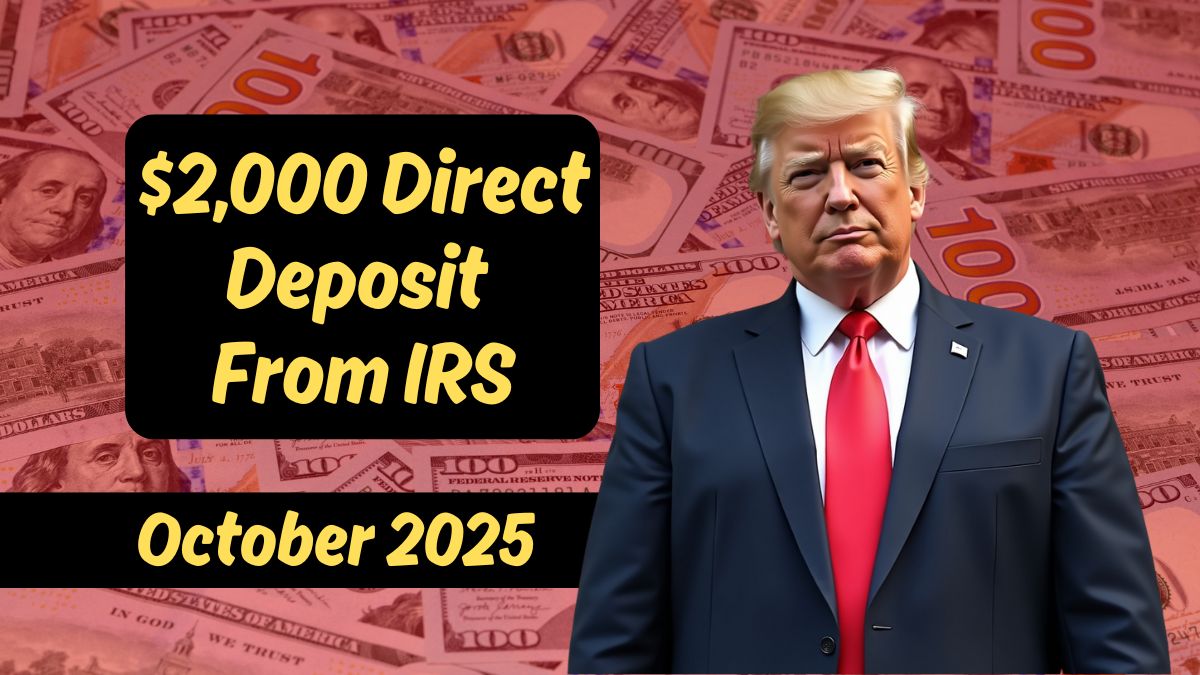As October 2025 approaches, rumors are swirling across social media, news outlets, and online forums: “Is the IRS issuing a $2,000 direct deposit this month?”
For millions of Americans facing inflation, debt, and mounting expenses, the possibility of extra federal relief stirs both hope and uncertainty. But what’s the reality behind these claims?
The Current Status: No Official Stimulus Yet
At present, no confirmed $2,000 direct payment has been authorized by the IRS or Treasury Department. Despite headlines proclaiming “$2,000 checks coming in October,” these are largely speculative or rooted in legislative proposals rather than enacted law.
While Washington discussions continue over fresh relief for working individuals and seniors grappling with rising costs, nothing has yet been signed into law.
Among the proposals is the American Worker Rebate Act, which suggests payments of $600 to $2,400 for qualified taxpayers—but funds won’t flow until both houses of Congress pass the bill and the President signs it.
Why the $2,000 Rumors Are Spreading
Several factors fuel the persistent speculation:
- Widespread financial hardship. With rent, groceries, and healthcare costs climbing, many find the idea of additional stimulus highly appealing.
- Legislative chatter. Some lawmakers have floated new relief packages aimed at middle- and low-income households.
- Past stimulus history. Americans remember receiving checks during the 2020–2022 rounds, which keeps the hope alive.
- Viral misinformation. Unverified posts and headlines purporting “imminent $2,000 payments” amplify confusion.
To be clear, the IRS has issued warnings: do not trust unsolicited messages or websites that promise “instant access” to $2,000 funds—they may be scams.
Steps You Can Take Right Now
Though the $2,000 direct deposit isn’t confirmed, you can prepare proactively:
- Monitor the IRS website (irs.gov). Any legitimate new stimulus or rebate will be officially announced there first.
- File your 2024 tax return promptly. Prior stimulus programs typically used tax filings to determine eligibility and distribution.
- Verify your banking information. Keeping your direct deposit details current can speed up any future payments.
- Remain scam-aware. The IRS will never ask for your banking credentials via text, email, or social media to issue payments.
- Track legislative developments. Keep watch over bills like the American Worker Rebate Act—approval could unlock actual disbursements.
Who Could Qualify (If It’s Approved)
If a $2,000 stimulus were enacted, eligibility might mirror past relief measures:
- Single filers earning up to ~$75,000
- Married couples filing jointly with incomes up to ~$150,000
- Heads of household with dependents may receive additional amounts
- Seniors and Social Security recipients could also be included, depending on final legislative language
These thresholds are speculative—based on prior programs and proposed legislation—not confirmed IRS policy.
Potential Timeline for Payments
Should a relief package pass soon, IRS processing often begins within two to four weeks of approval. Direct deposits to bank accounts would typically be issued first, followed by paper checks for those without valid banking information. As of now, no timeline or schedule for payments in October 2025 has been confirmed.
Fraud Risks to Watch
Scammers are already taking advantage of uncertainty around the rumored deposit:
- Delete texts, emails, or social media messages promising “instant IRS $2,000 deposits.”
- Never provide your bank account, Social Security number, or personal data to anyone claiming to facilitate payment.
- Rely solely on official government channels—the IRS, Treasury, or Congress—for updates and announcements.
Why So Many Still Hope for Relief
The economic strain on many households is real. A one-time $2,000 payment could help cover rent, bills, groceries, or medical expenses. For low-income workers and seniors, it’s more than just financial aid—it’s a lifeline. That’s why rumors persist and why many are watching Congress and the IRS closely.
But despite the buzz, act with caution. Until the IRS or Treasury make an official announcement, treat sensational headlines and social media claims as unverified.
At this moment, there is no confirmed $2,000 direct deposit stimulus scheduled for October 2025. While lawmakers have floated new relief plans like the American Worker Rebate Act, such proposals remain under discussion and have not yet become law.
Until official confirmation arrives via trusted government sources, stay vigilant against scams, keep your tax filings and bank info up to date, and track legislative news closely.
FAQs
Has the IRS ever paid $2,000 directly before?
In past stimulus rounds, payments typically ranged lower (e.g. $1,200, $600). No official history supports a standalone $2,000 deposit to all.
Could I still receive $2,000 even if my income is above $75,000?
Final eligibility criteria would depend on the actual legislation passed; higher earners may be phased out or excluded.
How will I know if the $2,000 direct deposit is real?
The IRS will post any new program on irs.gov and via official press releases. Avoid trusting unsolicited messages or social media claims.

